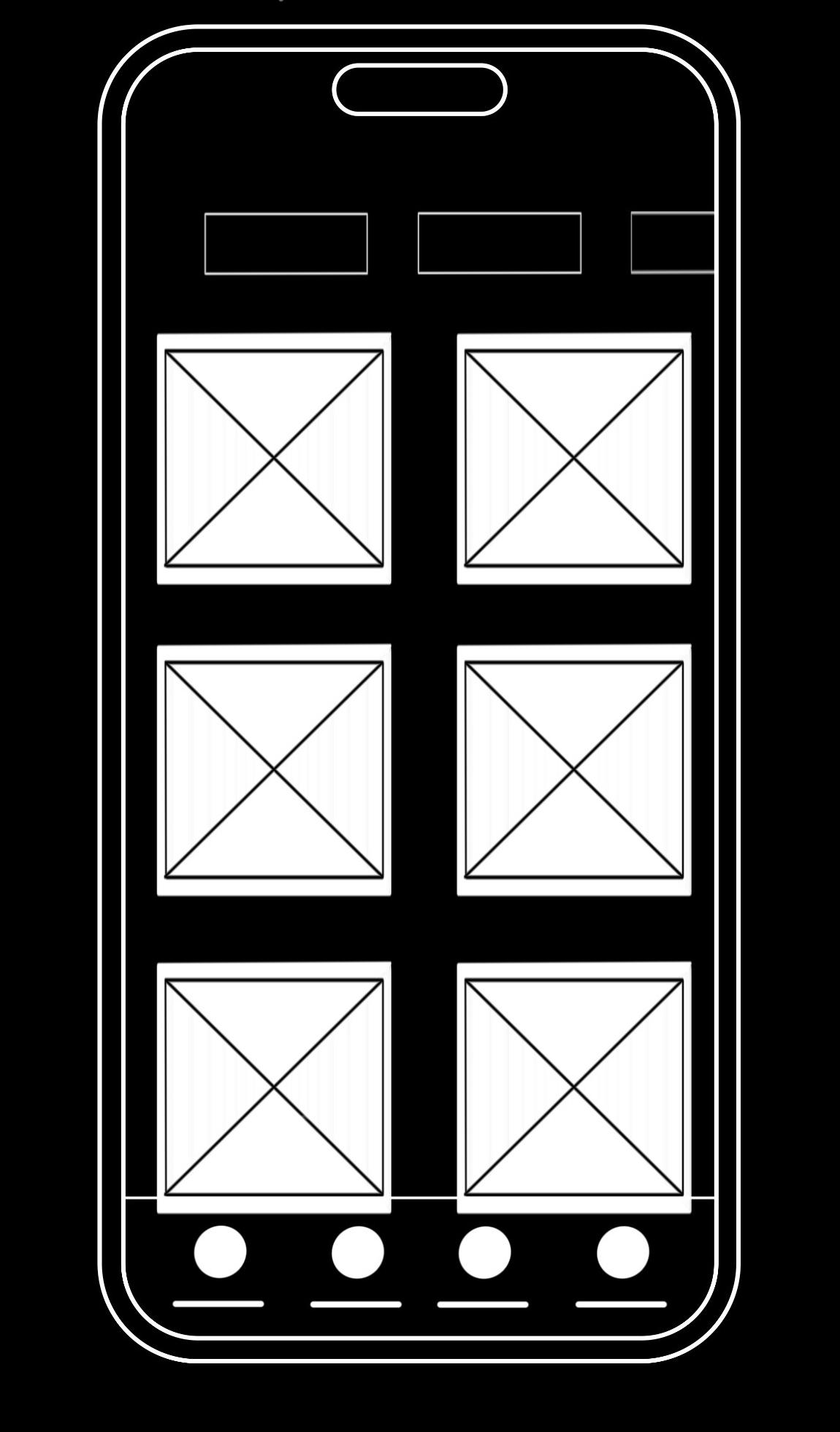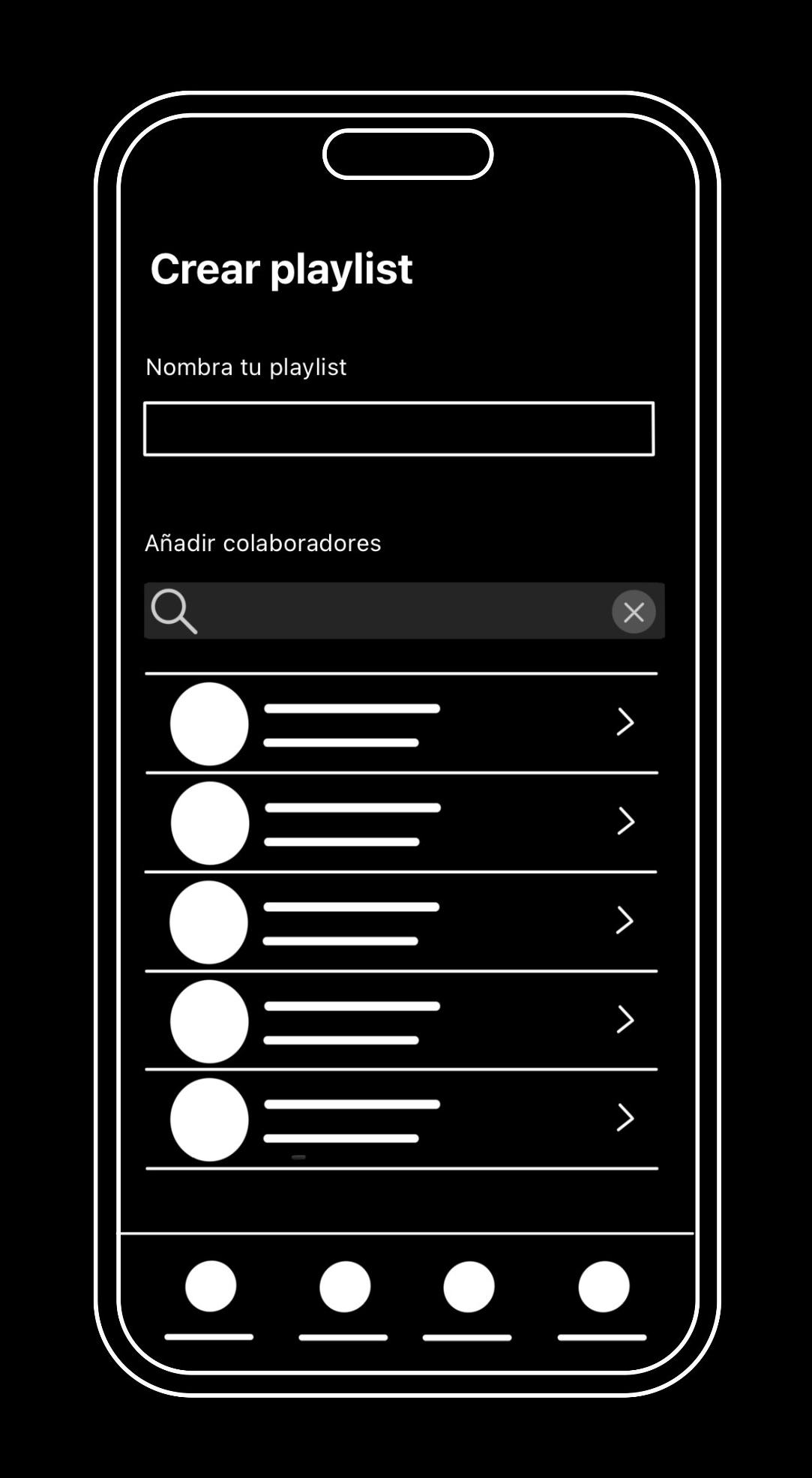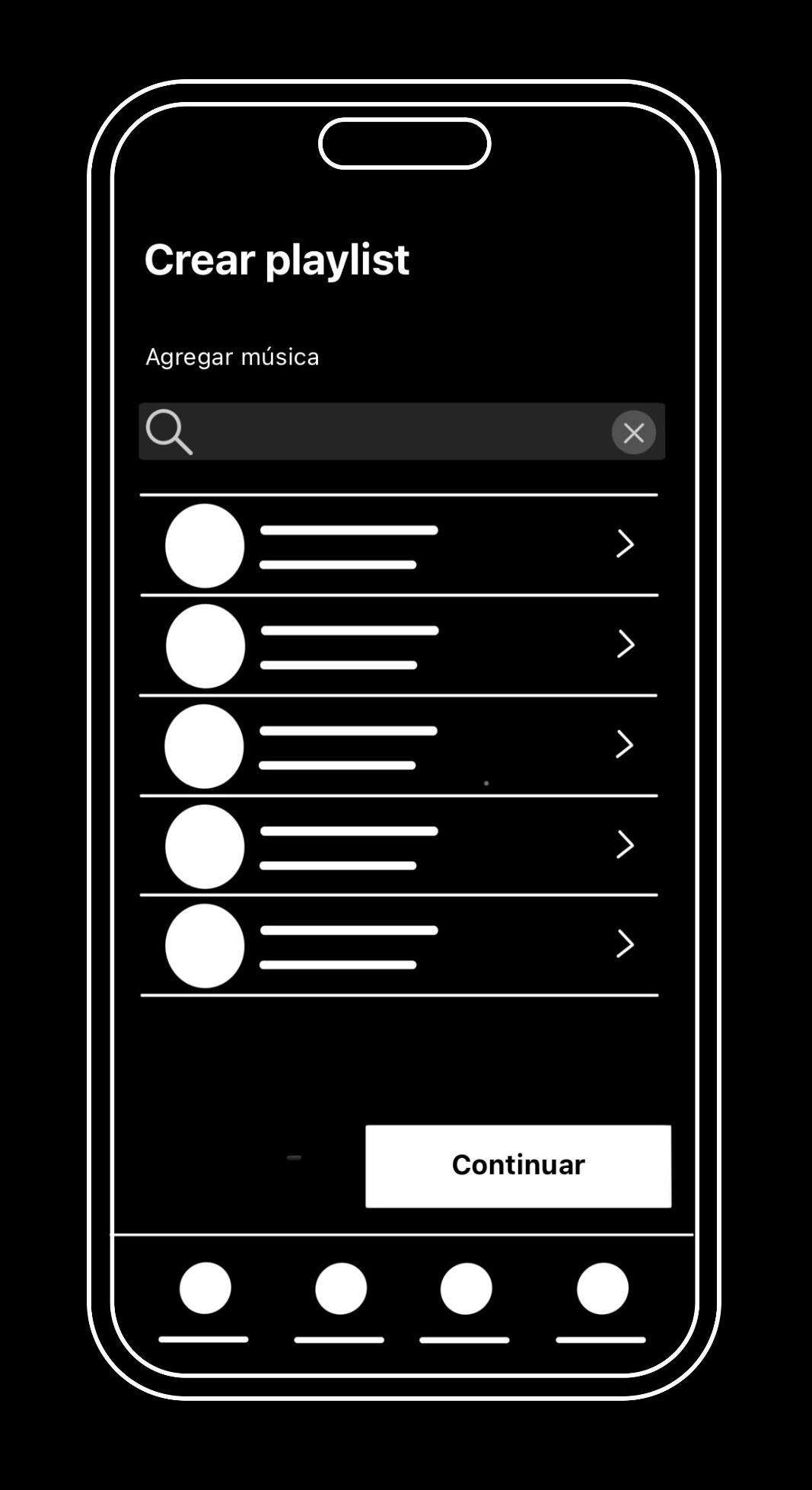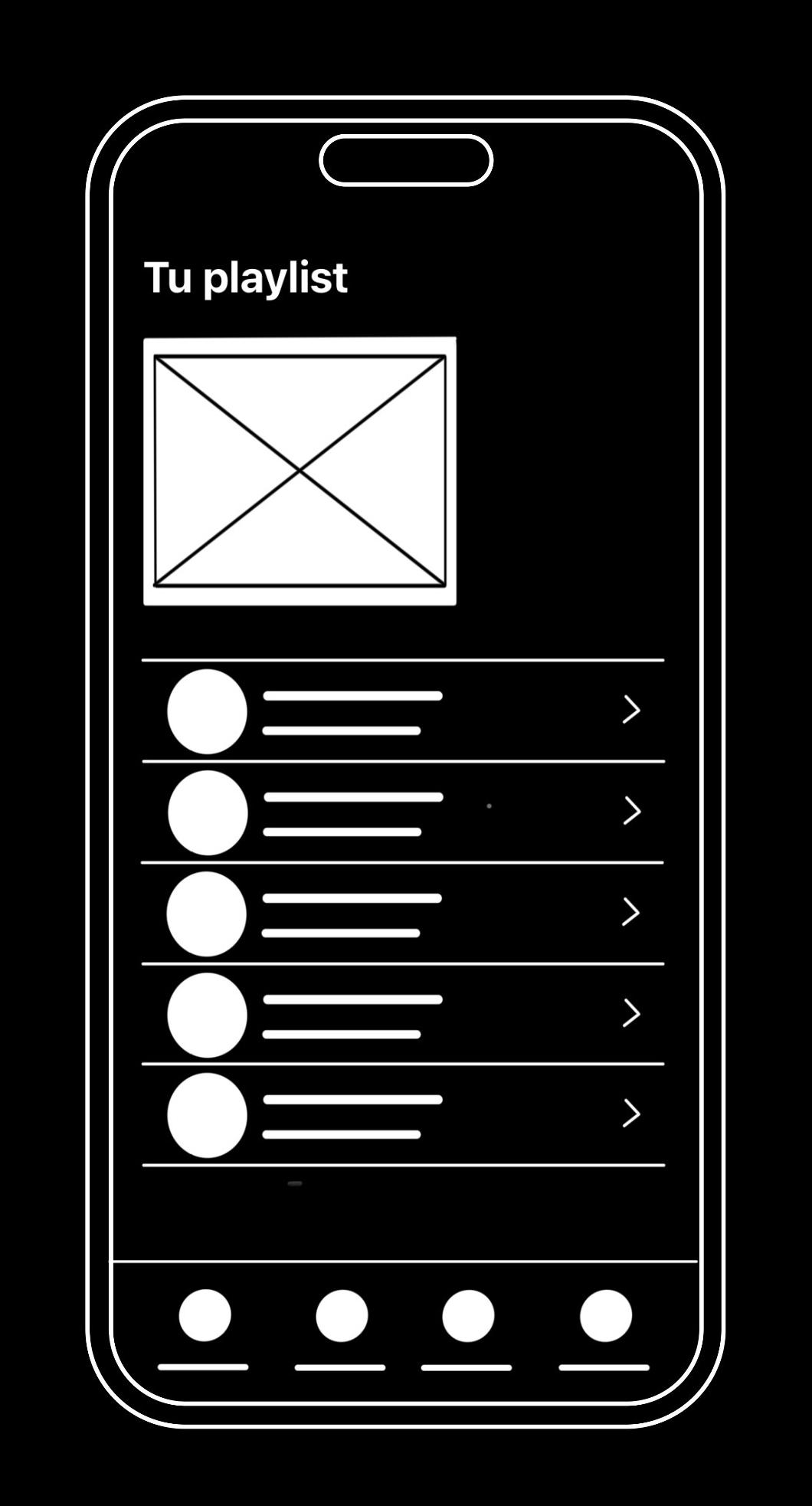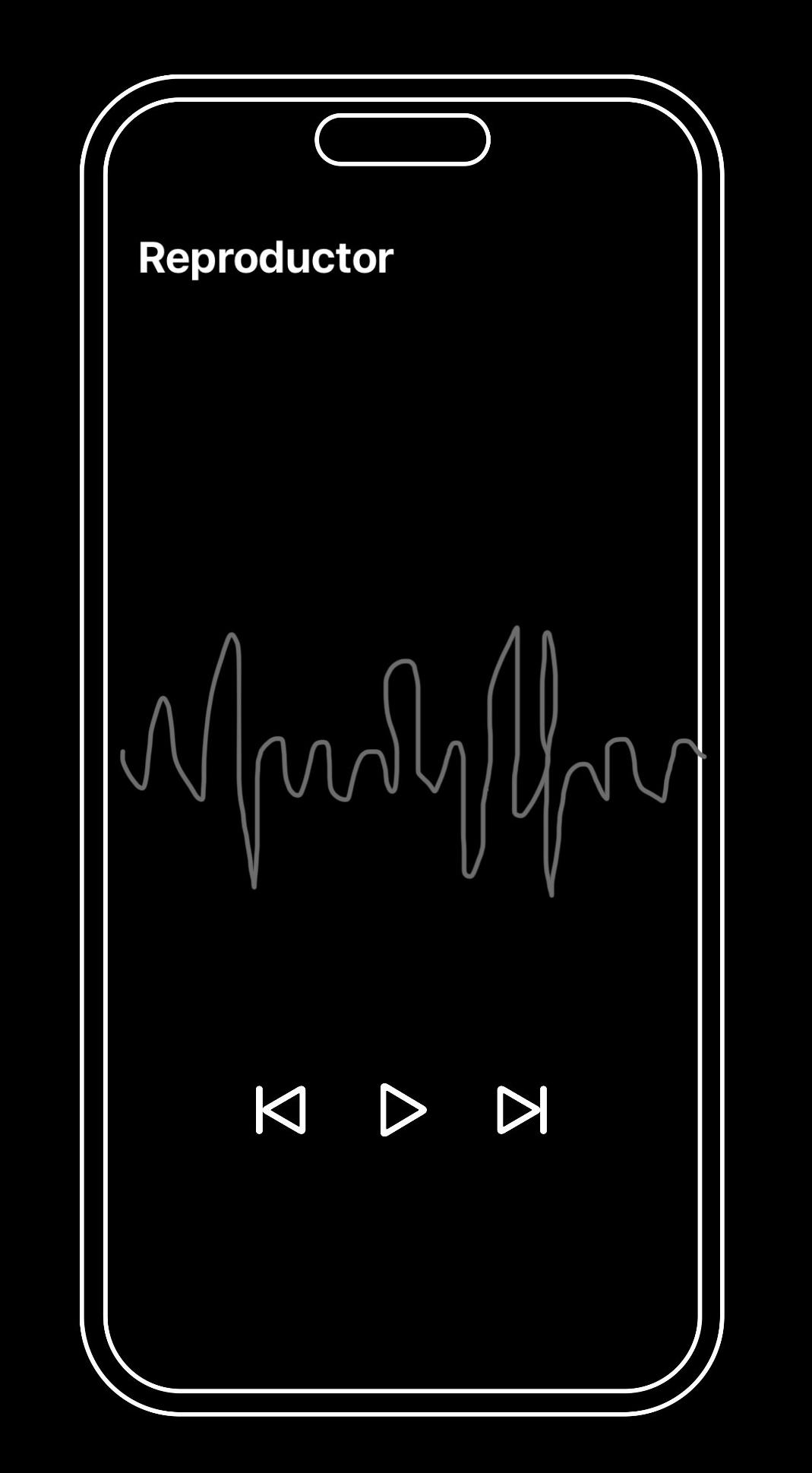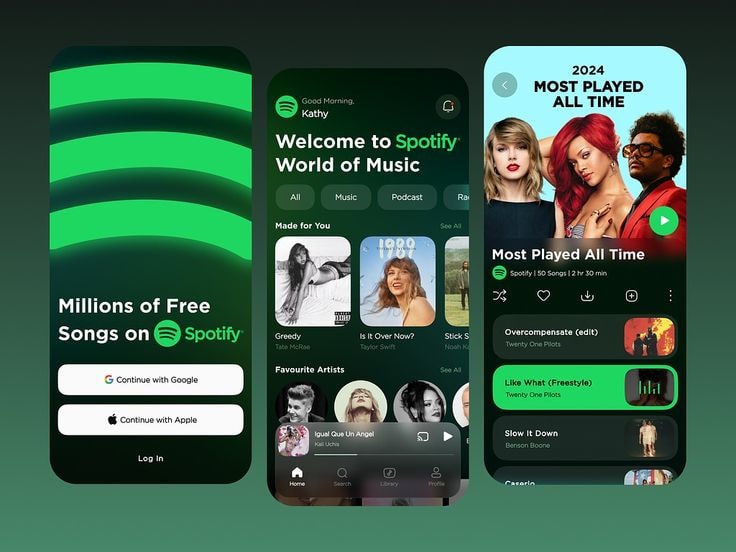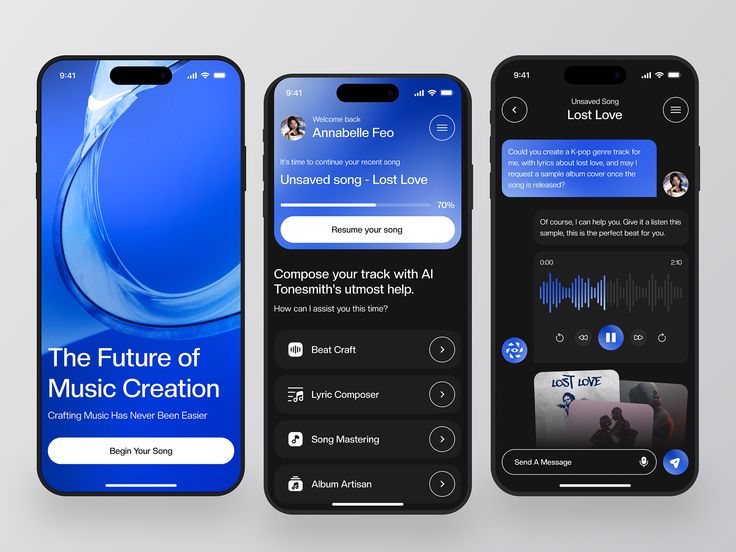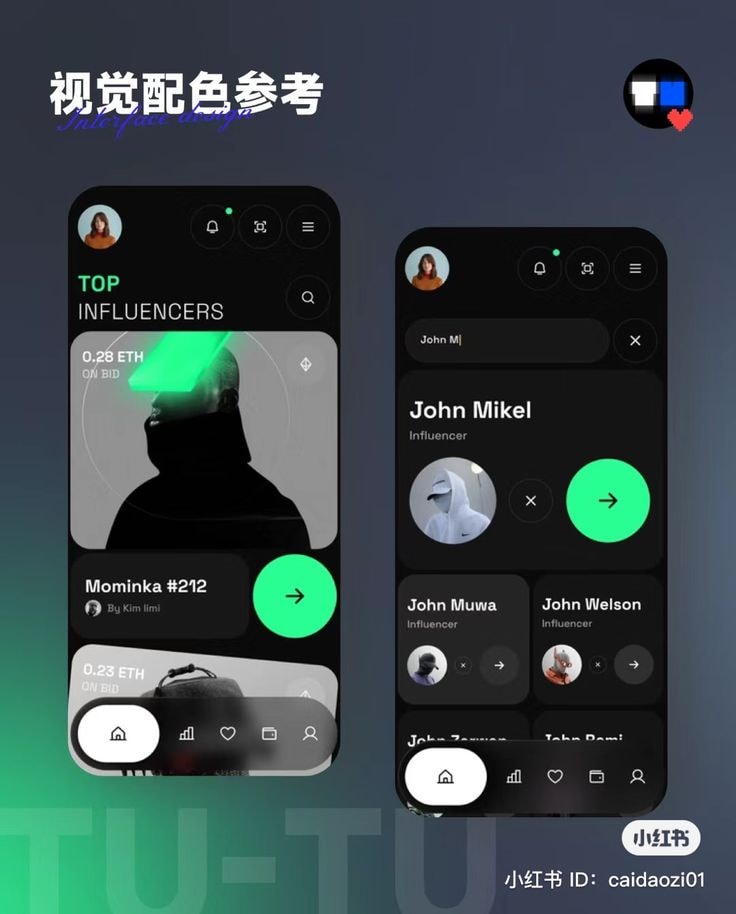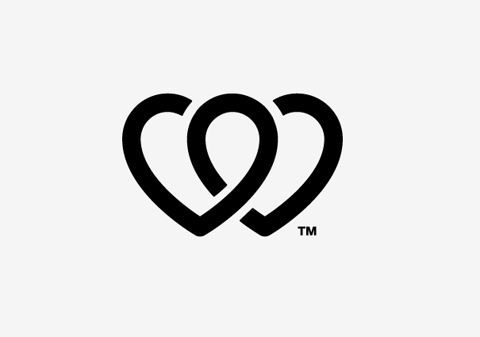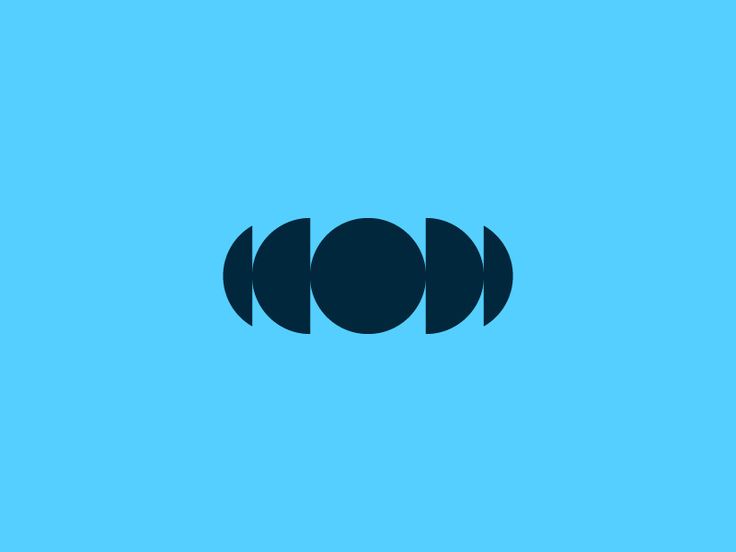Explore each step of the Managing Director’s process by clicking on the nodes below.
Research and strategy
Understanding users, defining problems, and validating the idea.
Users
Problem & Solution
POV+MVP
Moodboard
Exploration and prototyping
Flow design, structure, and initial iterations.
Wireflow
User Task Flow
Wireframes in medium
Wireframes on paper
Flowchart
Final design and validation
UI, interaction, and user testing.
Usability testing
A/B testing
High-fidelity prototype
Design patterns
Functional prototype
Design System
Responsive components
UI Kit
MixMate
Reinventing shared music
Music has always been a collective experience, but the tools to manage it haven't evolved at the same pace. MixMate allows you to create collaborative playlists in real-time, where anyone can add, edit, and mix without interruptions.
Connect, create, and enjoy without limits.
Users
Partygoers and social music lovers who want to easily share music at gatherings.
DJs or collaborative producers looking to integrate audience suggestions into their sets.
Users of virtual events seeking to influence the music and actively participate in the group experience.
Problem
Traditional playlists are static, limited, and difficult to manage as a group. Sharing music often relies on a single user controlling the list, leading to a lack of dynamism and a less fluid experience at events and gatherings.
Solution
A platform that allows real-time playlist editing, integrating intuitive interactions and collaborative tools that turn every musical session into a truly shared experience.
POV + MVP
From the problem to the first solution.
POV allowed us to define the central problem and understand user needs. From this, the MVP focused on developing a functional version with the essential features to test the idea and improve it with each iteration.
POV
Sol is a design student living in Buenos Aires. She loves throwing parties at her house with her friends, but when it comes to playing music, it gets complicated because everyone has different tastes. She needs an app that helps her find common ground.
This first version includes:
Creation and management of collaborative playlists

Search and exploration of playlists
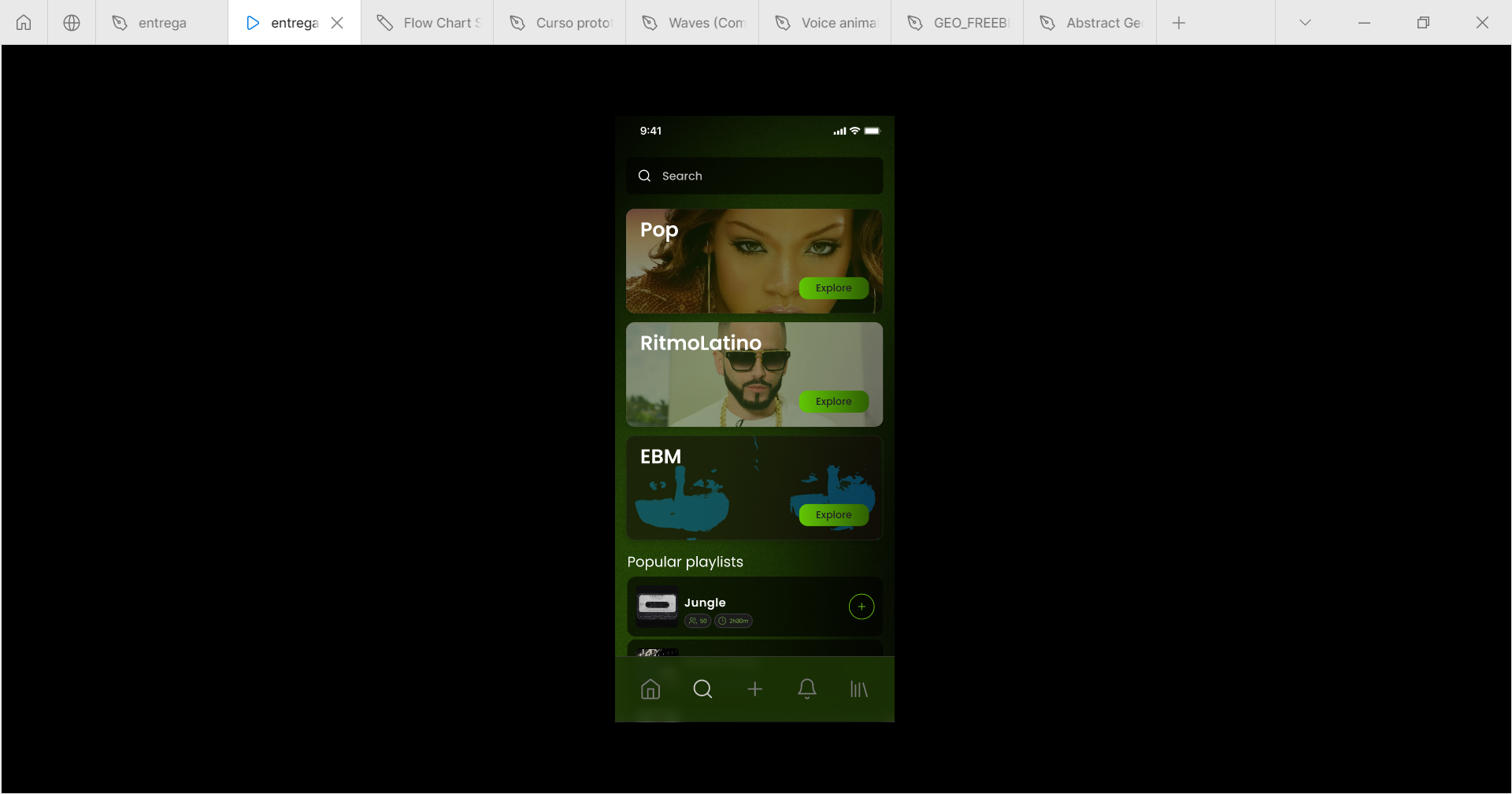
Playing music in the app
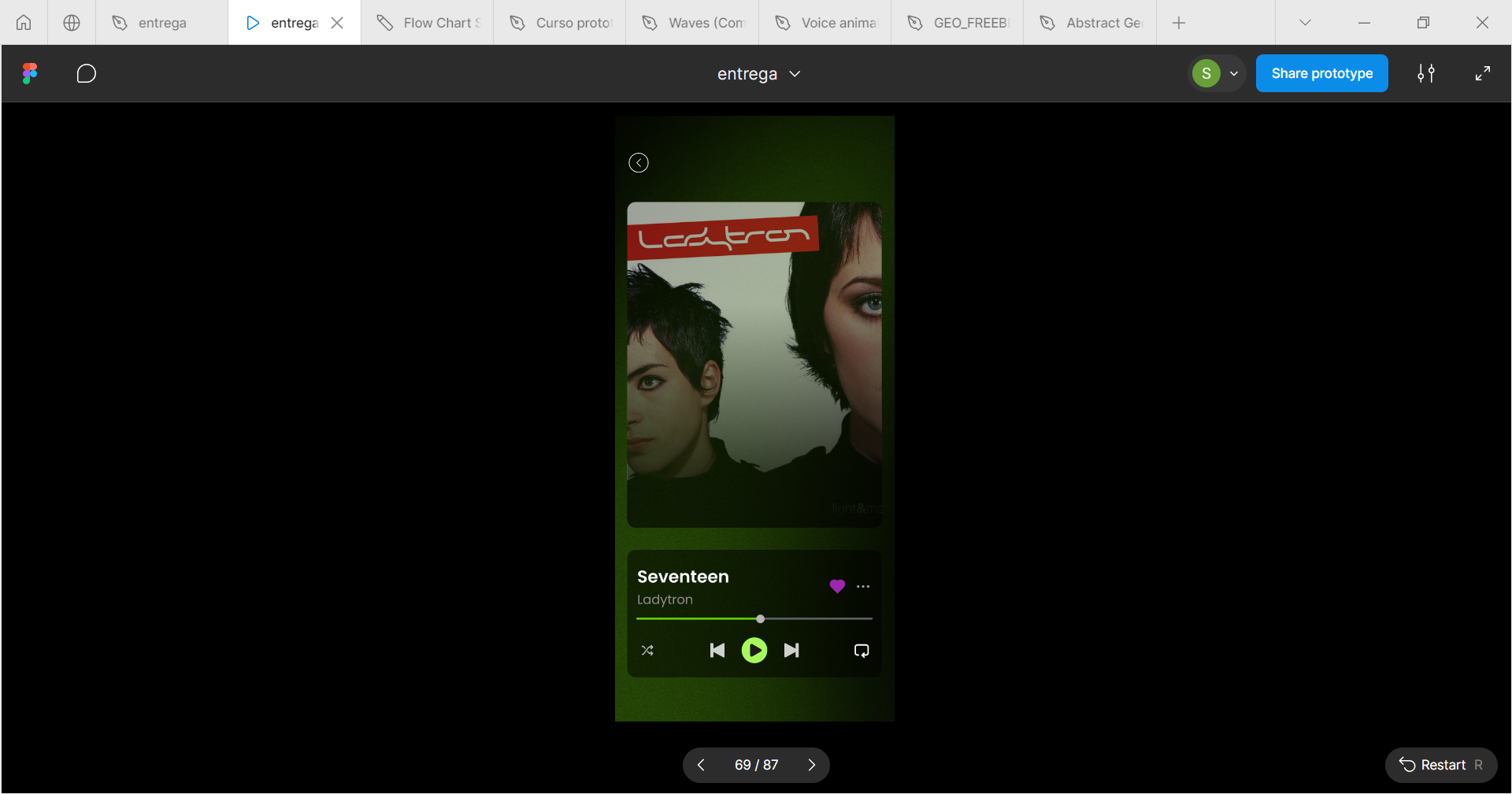
From idea to design
Prototype Iterations
The design of MixMate evolved through different stages: Starting from sketches, we explored various layouts to prioritize usability.
Context
You are at a party with friends, and you need to create a playlist, add music, and friends.
Objectives
Verify that the flow of the first functionality of the MVP works correctly, is intuitive, and navigable.
Create a playlist
We conducted usability tests at medium fidelity with 3 different users. These tests were performed with the first functionality of the app, in this case.
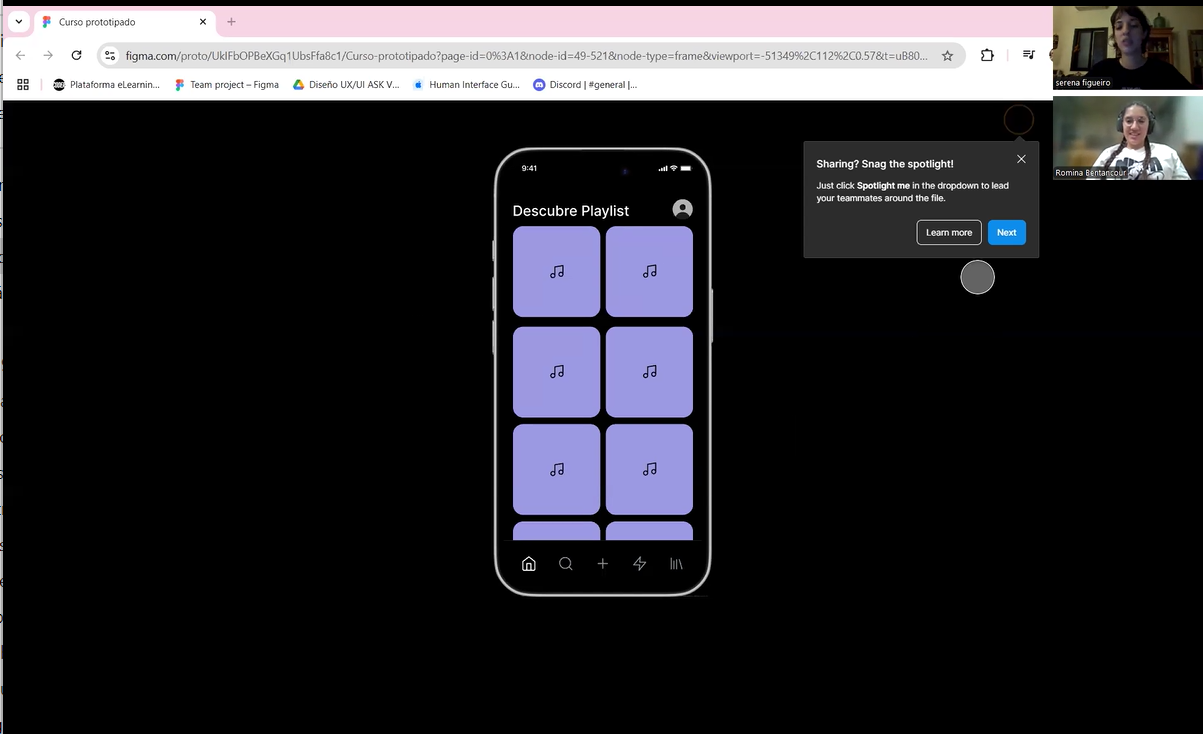
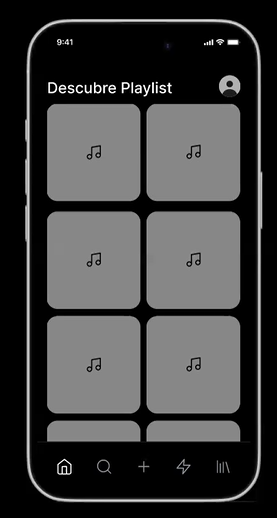
Ease of use
Users
Romi
Juan
Tomi
Task 1 (Create Playlist)
1
1
1
Task 2 (Add friends)
1
1
1
Task 3 (Add music)
1
1
1
Usage performance.
Counting the clicks or steps a user takes to reach a screen allows for evaluating the efficiency and fluidity of the navigation flow. Fewer steps mean better usability and less cognitive effort.
Users
Romi
Juan
Tomi
Steps
7 steps
11 steps
9 steps
Efficiency Analysis
Insights
Users 2 and 3 needed more steps to complete the task due to features that were not prototyped. This led to additional attempts and a decrease in efficiency.
Recommendations
Ensure that all key functions are properly prototyped to avoid confusion and unnecessary steps. A visual guide or prompts within the flow can also be included to assist users.
Usability Barriers
Insights
User 1 was able to complete the task with the minimum required steps, achieving 100% efficiency. This indicates that the base flow is functional for users familiar with this type of interaction.
Recommendations
No changes to the main navigation are necessary, but opportunities to enhance the experience without compromising simplicity should be explored.
Functionality Optimization
Insights
User 1 expressed the need to continuously add more songs, rather than finishing the flow after adding one.
Recommendations
Modify the flow to allow for the continuous addition of songs without exiting the process. This will improve the flow's flexibility and enable users to customize their playlist more efficiently.
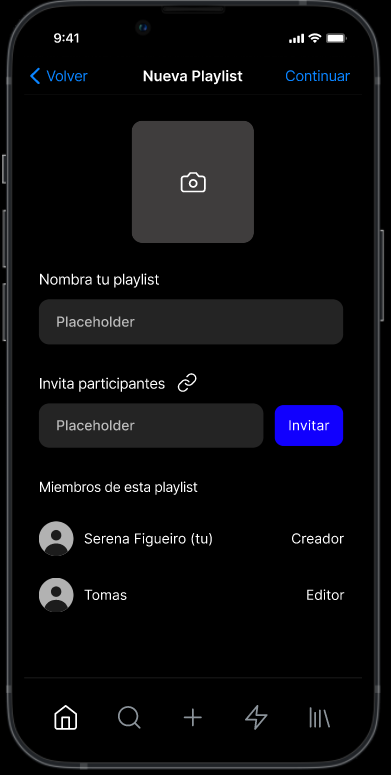
A traditional design with linear navigation was used, where the user progresses screen by screen. While it is familiar, it can lead to more errors by requiring multiple steps on the same view, increasing complexity.
61s
Average
time
87%
Success
rate
82%
Incorrect clicks

A bottom sheet modal was implemented, allowing actions to be performed without changing screens. It keeps the user in context while providing additional options in an accessible manner, reducing interruptions.
51s
Average
time
87%
Success
rate
69%
Incorrect clicks
B
A
User Task Flow
Defining the ideal path.
To design the best experience, we analyze the user's task flow, from opening the app to creating a collaborative playlist.
Main task: Create Playlist
Log in
Create a new collaborative playlist
Add collaborators and roles
Add songs
End
Home
Low Fidelity
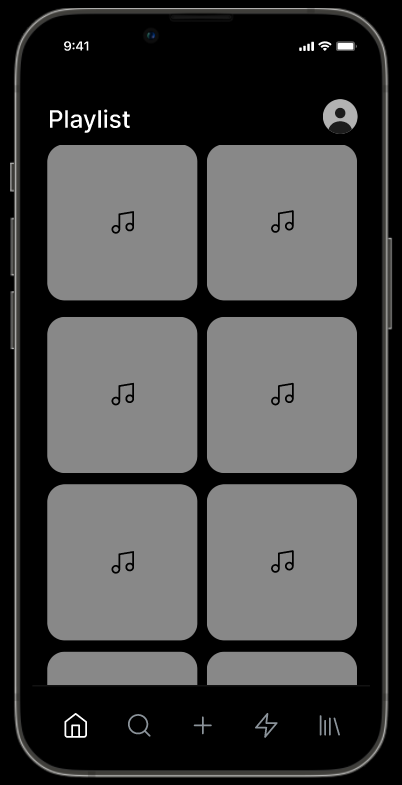
Mid Fidelity
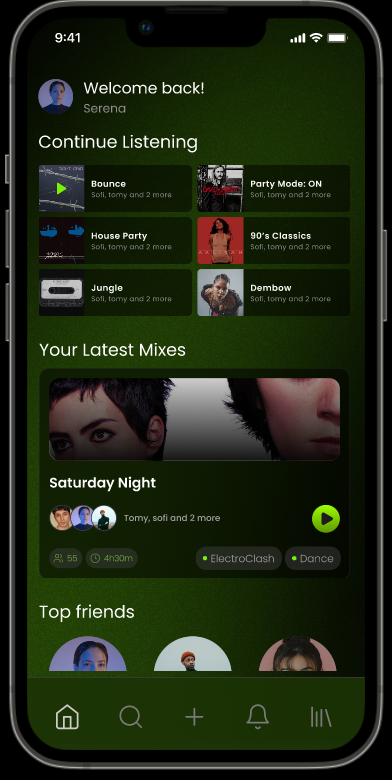
High Fidelity
Search
Low Fidelity
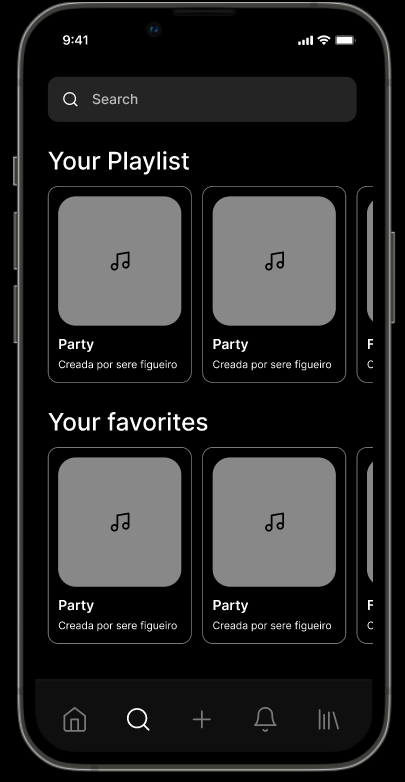
Mid Fidelity
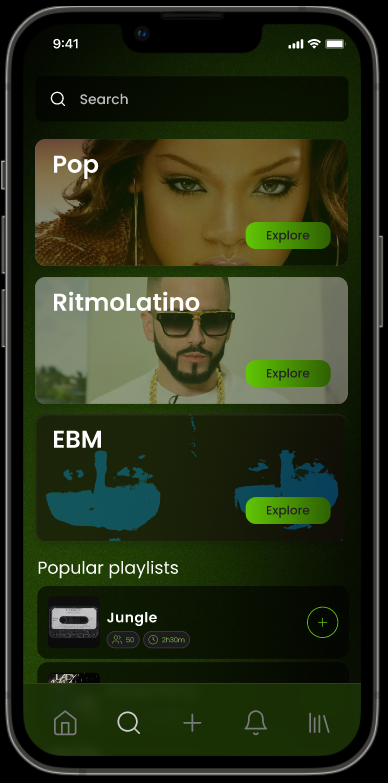
High Fidelity
Playlist
Low Fidelity
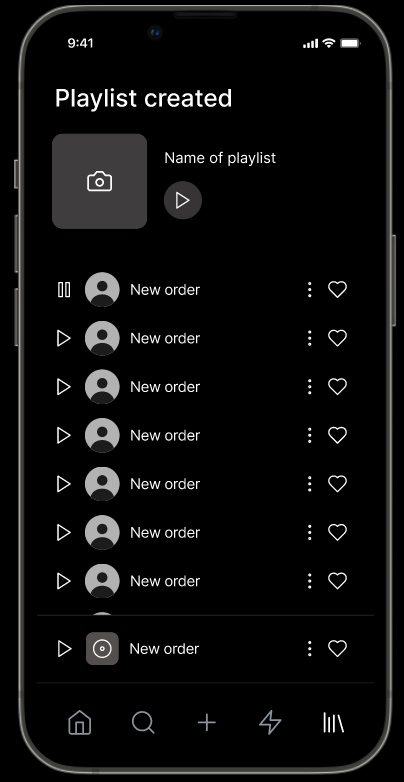
Mid Fidelity
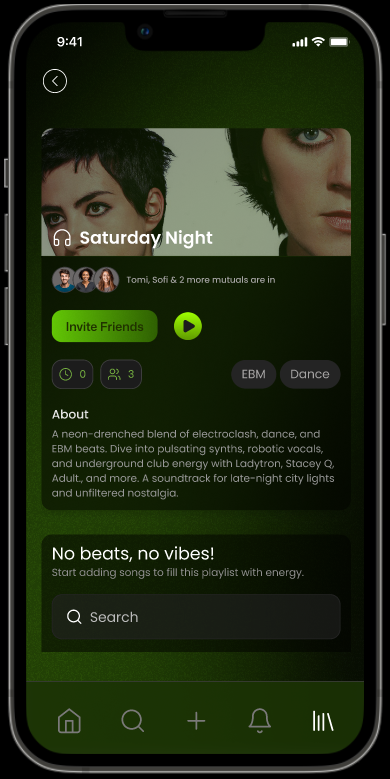
High Fidelity
Player
Fidelidad baja
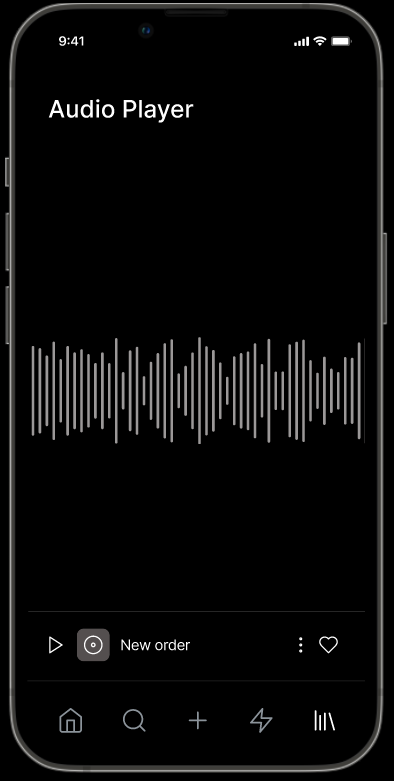
Fidelidad media
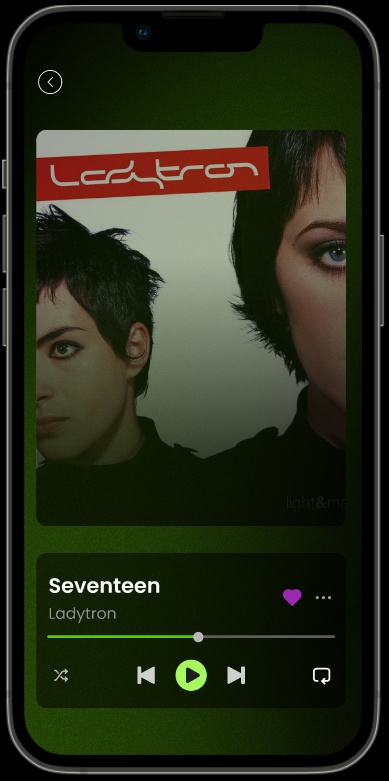
Fidelidad alta
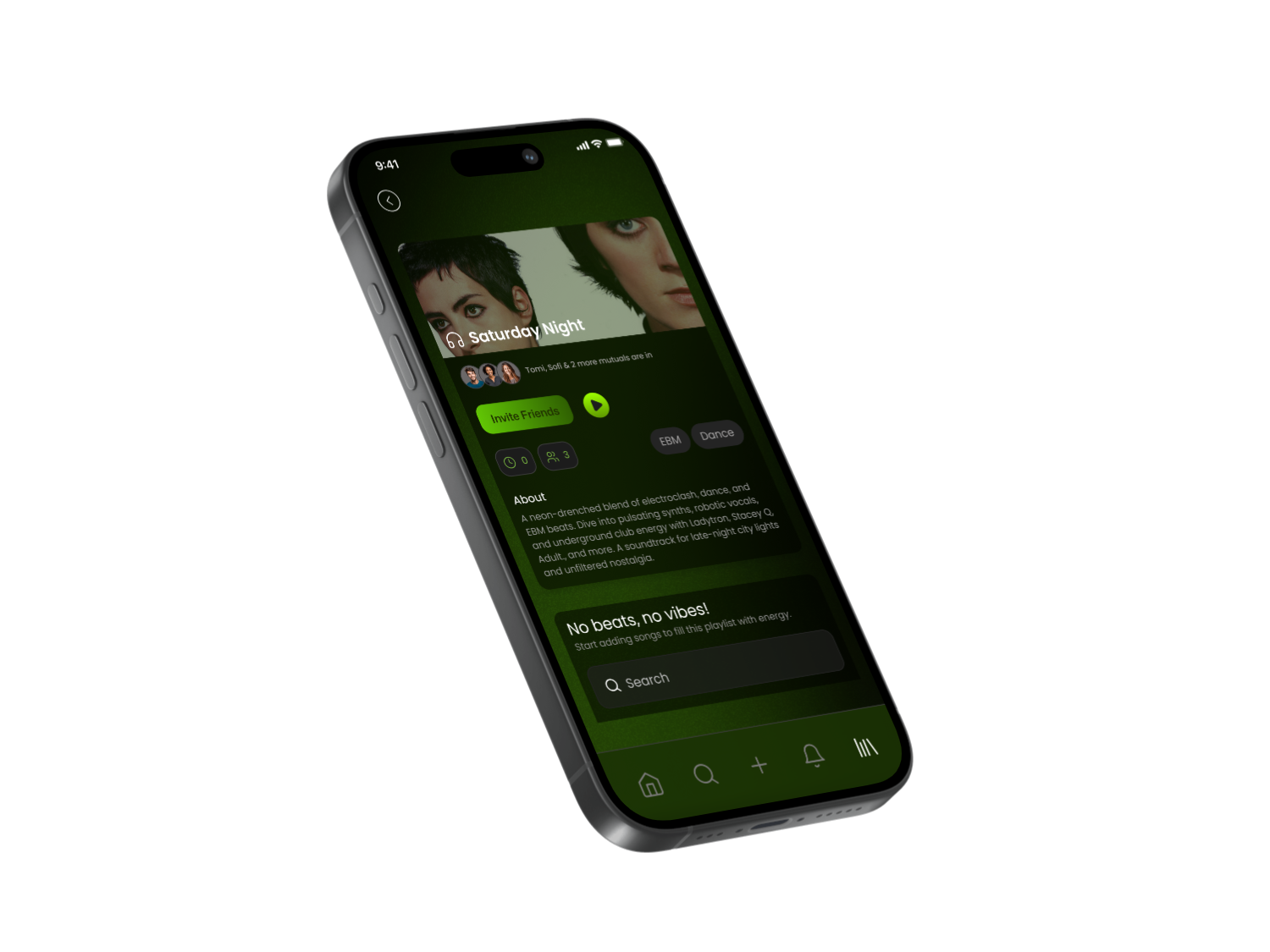
Bottom Navigation Bar
Back in App
Search Bar
Edge-to-Edge Imagery
Floating Action Button
Tags & Chips
Cards
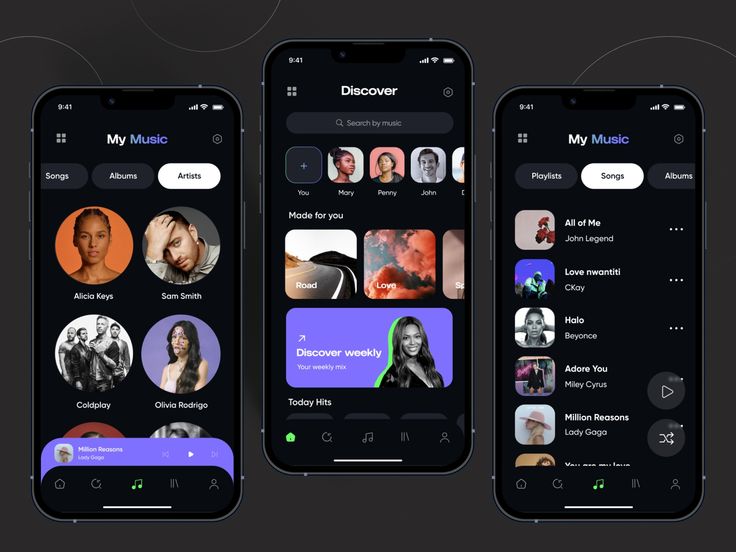
Simplicity
Dynamism
Collaboration
Customization
Modernity
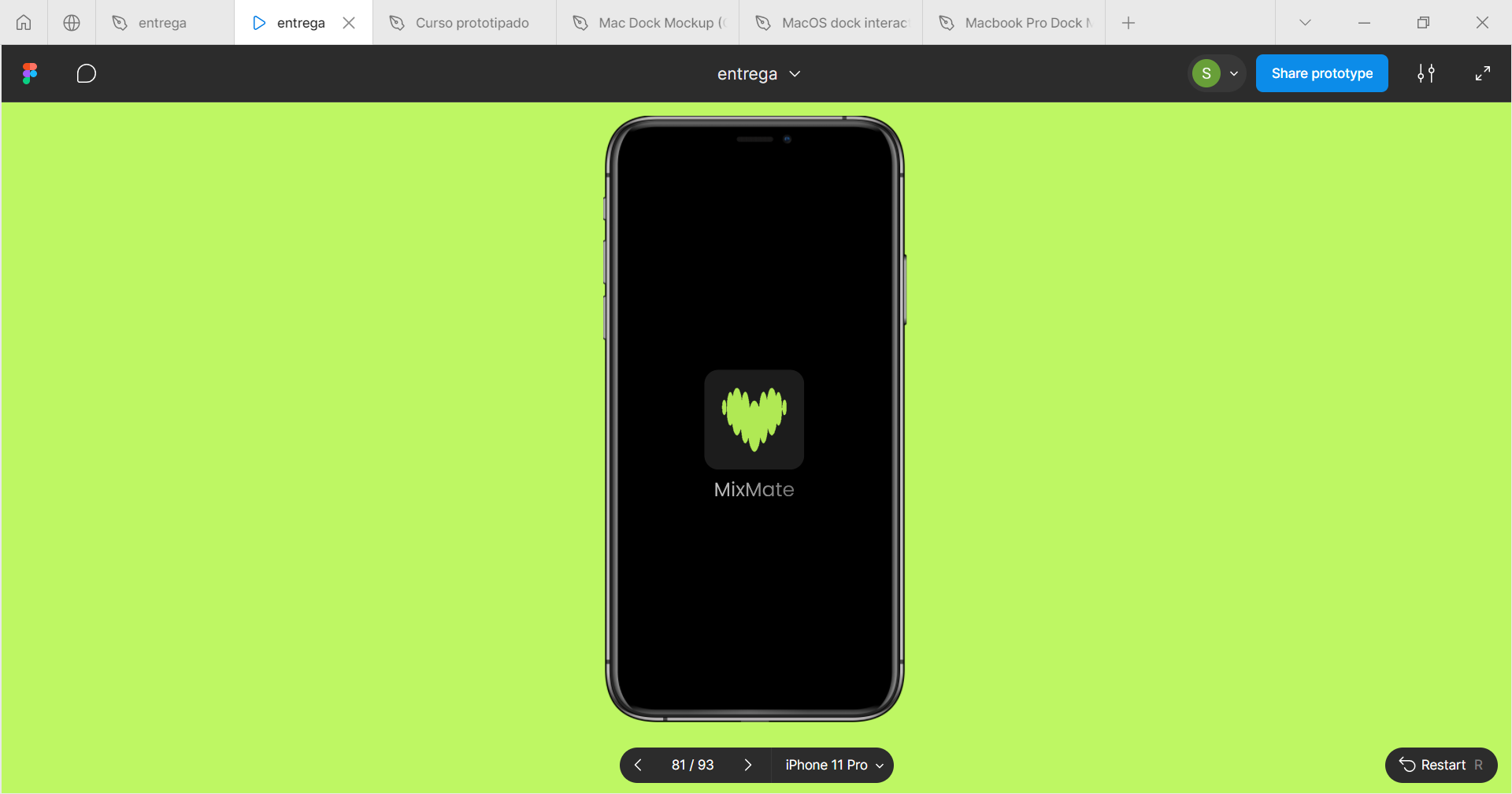
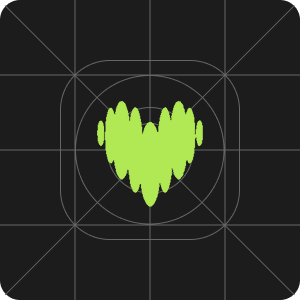
The logo follows a precise geometric structure, based on the golden ratio to achieve balance and harmony. Its design combines organic and dynamic shapes, evoking rhythm and sound. Its modularity ensures clarity and versatility across different sizes and platforms.
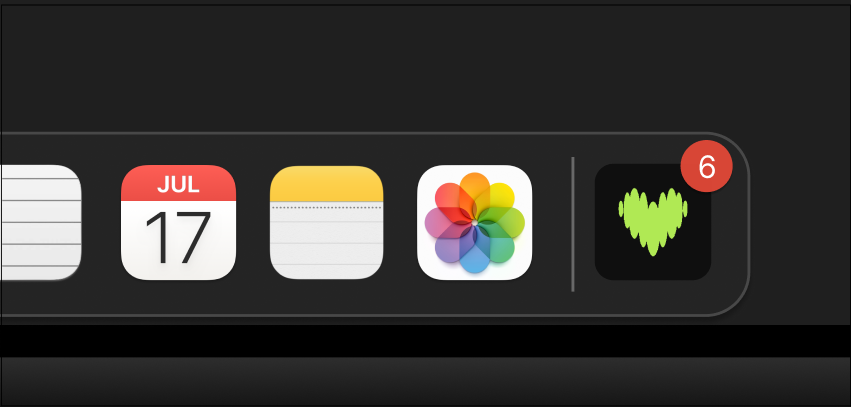
Research and strategy
Understanding users, defining problems, and validating the idea.
Users
Problem & Solution
POV+MVP
Moodboard
Exploration and prototyping
Flow design, structure, and initial iterations.
Wireflow
User Task Flow
Wireframes in medium
Wireframes on paper
Flowchart
Final design and validation
UI, interaction, and user testing.
Usability testing
A/B testing
High-fidelity prototype
Design patterns
Functional prototype
Design System
Responsive components
UI Kit
MixMate
Reinventing shared music
Music has always been a collective experience, but the tools to manage it haven't evolved at the same pace. MixMate allows you to create collaborative playlists in real-time, where anyone can add, edit, and mix without interruptions.
Connect, create, and enjoy without limits.
Users
Partygoers and social music lovers who want to easily share music at gatherings.
DJs or collaborative producers looking to integrate audience suggestions into their sets.
Users of virtual events seeking to influence the music and actively participate in the group experience.
Problem
Traditional playlists are static, limited, and difficult to manage as a group. Sharing music often relies on a single user controlling the list, leading to a lack of dynamism and a less fluid experience at events and gatherings.
Solution
A platform that allows real-time playlist editing, integrating intuitive interactions and collaborative tools that turn every musical session into a truly shared experience.
POV + MVP
From the problem to the first solution.
POV allowed us to define the central problem and understand user needs. From this, the MVP focused on developing a functional version with the essential features to test the idea and improve it with each iteration.
POV
Sol is a design student living in Buenos Aires. She loves throwing parties at her house with her friends, but when it comes to playing music, it gets complicated because everyone has different tastes. She needs an app that helps her find common ground.
This first version includes:
Creation and management of collaborative playlists

Search and exploration of playlists

Playing music in the app

From idea to design
Prototype Iterations
The design of MixMate evolved through different stages: Starting from sketches, we explored various layouts to prioritize usability.
Context
You are at a party with friends, and you need to create a playlist, add music, and friends.
Objectives
Verify that the flow of the first functionality of the MVP works correctly, is intuitive, and navigable.
Create a playlist
We conducted usability tests at medium fidelity with 3 different users. These tests were performed with the first functionality of the app, in this case.


Ease of use
Users
Romi
Juan
Tomi
Task 1 (Create Playlist)
1
1
1
Task 2 (Add friends)
1
1
1
Task 3 (Add music)
1
1
1
Usage performance.
Counting the clicks or steps a user takes to reach a screen allows for evaluating the efficiency and fluidity of the navigation flow. Fewer steps mean better usability and less cognitive effort.
Users
Romi
Juan
Tomi
Steps
7 steps
11 steps
9 steps
Efficiency Analysis
Insights
Users 2 and 3 needed more steps to complete the task due to features that were not prototyped. This led to additional attempts and a decrease in efficiency.
Recommendations
Ensure that all key functions are properly prototyped to avoid confusion and unnecessary steps. A visual guide or prompts within the flow can also be included to assist users.
Usability Barriers
Insights
User 1 was able to complete the task with the minimum required steps, achieving 100% efficiency. This indicates that the base flow is functional for users familiar with this type of interaction.
Recommendations
No changes to the main navigation are necessary, but opportunities to enhance the experience without compromising simplicity should be explored.
Functionality Optimization
Insights
User 1 expressed the need to continuously add more songs, rather than finishing the flow after adding one.
Recommendations
Modify the flow to allow for the continuous addition of songs without exiting the process. This will improve the flow's flexibility and enable users to customize their playlist more efficiently.

A traditional design with linear navigation was used, where the user progresses screen by screen. While it is familiar, it can lead to more errors by requiring multiple steps on the same view, increasing complexity.
61s
Average
time
87%
Success
rate
82%
Incorrect clicks

A bottom sheet modal was implemented, allowing actions to be performed without changing screens. It keeps the user in context while providing additional options in an accessible manner, reducing interruptions.
51s
Average
time
87%
Success
rate
69%
Incorrect clicks
B
A
User Task Flow
Defining the ideal path.
To design the best experience, we analyze the user's task flow, from opening the app to creating a collaborative playlist.
Main task: Create Playlist
Log in
Create a new collaborative playlist
Add collaborators and roles
Add songs
End
Home
Low Fidelity

Mid Fidelity

High Fidelity
Search
Low Fidelity

Mid Fidelity

High Fidelity
Playlist
Low Fidelity

Mid Fidelity

High Fidelity
Player
Fidelidad baja

Fidelidad media

Fidelidad alta

Bottom Navigation Bar
Back in App
Search Bar
Edge-to-Edge Imagery
Floating Action Button
Tags & Chips
Cards

Simplicity
Dynamism
Collaboration
Customization
Modernity


The logo follows a precise geometric structure, based on the golden ratio to achieve balance and harmony. Its design combines organic and dynamic shapes, evoking rhythm and sound. Its modularity ensures clarity and versatility across different sizes and platforms.

© 2025 Serena Mali Figueiro
PRODUCT & UX/UI DESIGNER
